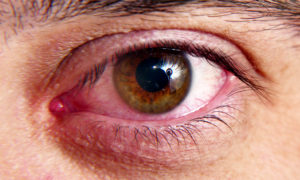By Suzanne LaKamp, OD, FAAO
Dec. 16, 2015
SYNOPSIS
Challenging patient situations can derail your workday. Develop and rehearse ECP and staff protocols to turn tough cases into positive outcomes. Includes five common scenarios and solutions.
ACTION POINTS
ASK OPEN-ENDED QUESTIONS. How are you doing today? Are you experiencing any eye or visual discomfort?
EDUCATE TO SET REALISTIC EXPECTATIONS. Avoid unrealistic patient expectations, and misunderstandings, by taking the time to fully explain conditions and treatment plans.
FOLLOW-UP BY PHONE. If a patient leaves your office obviously unsatisfied, give them a call in a few days to try to remedy the situation, after they have had time to cool down.
Patients fall into the realm of “challenging” when a number of conditions occur. Some patientsexhibit aggressiveness or have unrealistic expectations. Others simply may be ina bad mood or have a dispute with a staff member. Finally, seniors and children present challenging circumstances more than other age groups. The key to handling these situations, which can eat up chair time and generate ill feeling and poor word-of-mouth or negative online reviews, is to have protocolsfor you–and, importantly, your whole staff–to employ in effecting positive or, at least, less damaging outcomes.
Recognize Challenging Patient Situations
Aggressive Patient: Give the patient space to cool down. Leave the exam room, and then come back, or allow the person to take some time for themselves in an unused room in the office. If the frightening hostility continues, let the person know that you will reschedule them for another time. In severe cases, check in their health record to see if they have a condition like post-traumatic stress syndrome, and refer to a family doctor or psychologist.
Patient in Bad Mood:Remain calm and ask open-ended questions, without challenging the patient to answer questions that may seem harmless, but which they don’t want to answer. Ask: “How are you doing? Is everything OK? Has anything changed health-wise, or otherwise, since our last visit?”
Patient in Dispute with Staff Member: Take a moment to step aside with your staff member to discuss how you will approach the situation. For example, you can decide together to offer the patient an exchange of eyewear with no additional expenses.
Difficult Child or Elderly Patient: Try making small talk first to put them at ease, asking about after school activities, in the case of the child, or hobbies and family in the case of the elderly patient. Look through online or off-line style magazines in the optical to get the patient interested and in the mood to settle down for eyewear selection and fitting.
Patient with Unrealistic Expectations: It pays to set expectations before procedures like LASIK and cataract surgery, to let the patient know they will still, at some point, need eyewear. If the patient still expresses surprise following the procedure, you can then gently remind them about what you discussed. —ROB Editors
The Aggressive Patient: Show Understanding, Consider Rescheduling
Challenge: The most challenging type of patient is someone who displays aggressive behavior. It is acceptable for a threatened doctor to end the examination, possibly reschedule the exam depending on the situation at hand, or refer the patient to receive care elsewhere.
By allowing the patient to cool down, and to wait for a better day, it is possible to meet that patient’s healthcare needs. Sometimes this kind of behavior is the result of a psychological condition such as post-traumatic stress syndrome (PTSD), requiring a referral to a psychologist.
Solution: For patients who are short with the staff or ECP, it is best for the healthcare provider to not internalize these behaviors. Without knowing the motive or reason for someone’s seemingly negative attitude, judgement should never be made about that patient. The ECP may inquire about the patient’s welfare, to enhance the communication and the level of care given. It is highly unlikely patients seek to treat healthcare providers poorly.
A patient may have suffered the loss of employment, may be grieving the death of a loved one, or may have received a new cancer diagnosis. Take the time to communicate with your patient to find out what is behind their negative attitude.
The patient with the requested glasses Rx re-check, may not have had his or her visual needs met, has unrealistic expectations, really wants a frame change – not an Rx change, or has had a real change in Rx, such as an out-of-control diabetic. Discover and remedy the unmet need, and the patient will be satisfied.
The Patient in a Bad Mood: Be Empathetic
Challenge: This is the patient who shows up snapping at the doctor and the staff, and who may even be uncommunicative, or hostile, when asked questions as seemingly benign as whether they already have sunglasses, and when their last eye exam was.
Solution: The best approach is to remember to treat the person, and not “the case.” A patient is more than his or her eye condition or visual acuity. ECPs should acknowledge the whole person, with accompanying eye health and visual needs. Attempting to understand the patient is very important. One should never make assumptions about what drives a patient’s particular mood or behavior.
By simply asking the patient how he or she is doing, and asking open-ended style questions, the motives for a negative attitude can be revealed. Examples of open-ended questions: “How are you doing today? Are you experiencing any eye and visual discomfort?”
Whether a patient is experiencing a poor outcome from a surgical procedure, an unexpected complication from an ocular disease, or intractable dryness, feelings such as anxiety, depression, disappointment and sadness may overcome the patient. The physician should never take the patient’s feelings personally. The office visit is all about the patient.
Empathetic listening is the most important tool for a doctor to demonstrate the importance of that encounter to the patient. When a patient feels truly cared for, communication lines open. Better communication leads to better outcomes. It is possible, unfortunately, that a patient may fail to reciprocate an effective communication style, despite the best efforts of the doctor. Communication is, after all, multi-directional. The patient must be willing to actively participate in the conversation.
DocumentChallenging Patient Situations
Documentation is vitalfor both legal and medical reasons.All patient correspondence and interaction should be entered into the patient record. For example, if a patient is not following the recommended wear and care regimen for their contact lenses, it is important that you make a note of it in their health record to legally protect your practice in case a complication arises.
However, caution is urged when adding notes to a patient file, as they could become part of the permanent medical record. Maintain professionalism by citingfacts and using non-inflammatory language about the patient encounter. Subtleties work best. For example, instead of describing a patient as a “poor historian,” one should include statements about a patient “forgetting,” or “not knowing,” something about his or her medical care.
Venting in a patient file is never okay. Patients canrequest copies of their medical record, and they have easier-than-ever access to their record through your EHR’s patient portal. Some clinics may flag the accounts of challenging patients with agreed-upon symbols or language only known to the clinic.
News of unhappy patients, particularly patients with more challenging personalities, can diminish the morale of entire clinics. Notoriety of the more challenging patients by word-of-mouth is often sufficient warning for future exams.
—Suzanne LaKamp, OD, FAAO
The Patient Who Has a Dispute with a Staff Member: Resolve as a Team
Challenge: The patient who is angry with a staff member, claiming that the staff member did not fully explain what their vision benefits covered, or somehow misled them about how their eyewear would function or look.
Solution: A patient and doctor should reasonably be able to work together to resolve any miscommunication or dissatisfaction. There is no room for personality conflicts in healthcare. If, however, the patient is not satisfied with a doctor or staff member, it is not uncommon to involve a supervisor and/or owner of a practice. The team can work together to devise a strategy and plan, such as offering the patient an exchange of new eyewear without additional cost, or new contact lenses.
If the patient does not find this subsequent encounter satisfactory, the clinic may attempt to contact the patient at a later date to follow up on unresolved concerns. Health care settings are driven and ranked by patient satisfaction. Character attacks, foul language and rude behavior, however, should never be tolerated in a health care setting. Repeat offending patients can be fired from a practice.
The Difficult Child or Elderly Patient: Respond to the Situation
Challenge: The child who won’t sit still in your chair, is too scared to listen to you and your staff (or simply won’t listen), or who expresses anger to their parent about not wanting any of the eyewear in your optical. Or, on the other end of the spectrum, an elderly patient who also has trouble listening (due to physical or mental impairment, or both), and is irritable in the optical, not wanting to spend time picking out eyewear.
Solution: There are different approaches to handling challenging patients of varying ages. For child-through-teenage years, the ECP may enlist the help of the parent. Often, the parent encourages good behavior from a child. You cannot appeal to logic or reason when examining a tired or fussy child. For the younger age group, not yet emotionally, or intellectually mature, the exam can always be rescheduled if unproductive.
A challenging teen may have a poor attitude, but this is manageable. For instance, the doctor or optician can reference style magazines, and ask the teen about their favorite actors and actresses, and look through the magazines together to create a “look” to go for in picking out eyewear. Teens, on average, are very respectful toward doctors. You can try engaging an unresponsive, or hostile, younger patient by starting off, or taking a break, with casual conversation: “How’s school going? What kinds of sports or after-school activities are you involved in these days?”
A key approach in managing a more difficult adult exam is to bridge any communication barriers. Demonstrating active listening, and showing genuine interest in the well-being of the patient, makes the patient feel cared for. The ECP must make the patient feel comfortable with open communication. Patients have needs in their healthcare, and better communication between doctor/staff and patient leads to better outcomes when those needs are met.
An example of a more challenging elderly exam could include working in a nursing home setting. The patient population in a nursing home is a spectrum of physical health and mental capabilities. The ECP must exercise increased patience for elderly who are frail or have advanced cognitive decline. An exam could be very uncomfortable or upsetting to these patients. It is also imperative to keep the exam as thorough, but as brief as possible, to prevent any distress to the patient.
Patient With Unrealistic Expectations: Be Thorough, Use Visuals
Challenge: Patient who is about to have cataract or LASIK surgery, and believes they will never have to wear glasses again, or the patient with severe and chronic dry eye who wants to be fitted in an extended wear contact lens that they can sleep in, and only have to take out once a month for one night’s rest and to change into a new one.
Solution: Thorough education is necessary for a patient to properly understand his or her care, and helps set expectations. Taking time with explanation, using eye models, drawings and pictures is very helpful. Patients need time and the doctor’s guidance to understand the complexities of healthcare. Always ask the patient if he or she understands the discussion and what is expected of the patient regarding follow-up care. Every visit. ECPs should treat all patients with respect, and remember that it is a privilege to serve others. Authentically living this philosophy will keep your patients returning.
Suzanne LaKamp, OD, FAAO, is an associate at Durrie Vision in Overland Park, Kan. To contact: dr.suzanne.lakamp@gmail.com

























